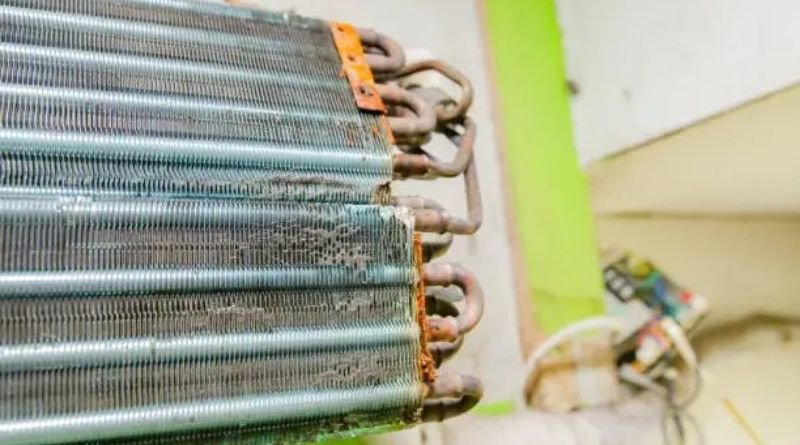Chillers are crucial components of air conditioning systems, especially in Dubai, where the hot and humid climate demands efficient cooling solutions. Proper maintenance of chiller AC coils—both condenser and evaporator coils—is essential for optimal performance, energy efficiency, and system longevity. Without regular upkeep, these coils can accumulate dirt, debris, and moisture, leading to reduced efficiency, increased energy consumption, and potential breakdowns. In this comprehensive guide, we will explore the best practices for maintaining chiller AC coils in Dubai’s demanding environment.
Understanding the Importance of Chiller AC Coil Maintenance
Chiller AC systems work by transferring heat between indoor and outdoor environments, and their efficiency depends largely on the condition of their coils. The two primary coils, the evaporator coil and the condenser coil, play vital roles in this process:
- Evaporator Coil: Absorbs heat from the indoor air, cooling the space effectively.
- Condenser Coil: Releases absorbed heat into the outdoor air, completing the refrigeration cycle.
When these coils are clean and well-maintained, the chiller system operates efficiently, consuming less energy and providing consistent cooling. Neglecting maintenance can lead to increased operational costs, system inefficiencies, and potential damage to other components.
Best Practices for Condenser Coil Maintenance
The condenser coil, located in the outdoor unit of a chiller, is exposed to environmental elements like dust, sand, and pollutants. These contaminants can reduce heat transfer efficiency, forcing the system to work harder. Here are the best practices for maintaining the condenser coil:
1. Regular Cleaning and Inspection
- Dubai’s dusty environment makes condenser coils prone to dirt accumulation. Cleaning the coil every three to six months helps maintain efficiency.
- Use a soft brush or a vacuum with a brush attachment to remove loose debris before applying a cleaning solution.
- A non-acidic coil cleaner or a mild detergent mixed with water can be sprayed onto the coil to break down stubborn dirt.
- Rinse with low-pressure water to prevent coil fin damage.
2. Monitor Airflow and Clear Obstructions
- Ensure there is adequate airflow around the condenser unit by keeping surrounding areas free of debris, plants, and objects.
- Regularly check for obstructions such as leaves, dust buildup, and accumulated moisture that could restrict heat dissipation.
3. Check for Refrigerant Leaks
- Refrigerant leaks in the condenser coil can reduce cooling efficiency and increase energy consumption.
- Technicians should conduct periodic inspections using leak detection tools to identify and repair any leaks promptly.
- Maintaining proper refrigerant levels ensures the system operates at peak performance.
4. Examine Coil Fins for Damage
- The thin metal fins on the condenser coil help dissipate heat efficiently. Bent or damaged fins can restrict airflow.
- Use a fin comb to straighten bent fins and improve heat exchange.
- If the damage is extensive, professional repair or coil replacement may be necessary.
5. Apply Protective Coatings
- In Dubai’s harsh climate, applying protective coatings to condenser coils can prevent corrosion caused by salt, humidity, and airborne pollutants.
- Anti-corrosion treatments extend the coil’s lifespan and improve overall system efficiency.
Best Practices for Evaporator Coil Maintenance
The evaporator coil, located inside the chiller unit, plays a key role in cooling by absorbing heat from indoor air. Proper maintenance ensures efficient cooling performance. Here’s how to keep the evaporator coil in top condition:
1. Regular Cleaning to Prevent Dirt Buildup
- The evaporator coil is prone to dust accumulation, mold growth, and bacteria buildup due to moisture condensation.
- Cleaning should be performed at least twice a year to maintain indoor air quality and system efficiency.
- Use a commercial coil cleaner designed for evaporator coils, ensuring safe and effective cleaning without damaging the fins.
- Rinse with water or use a no-rinse cleaner, depending on the product’s specifications.
2. Maintain Proper Air Filter Hygiene
- Dirty air filters can lead to clogged evaporator coils, reducing airflow and cooling efficiency.
- Inspect and replace filters every 30 to 60 days, depending on system usage and environmental conditions.
- Using high-quality air filters helps capture dust and pollutants, preventing them from accumulating on the coil.
3. Inspect and Clean the Drain Pan and Drain Line
- The evaporator coil generates condensation, which is collected in a drain pan and drained through a line.
- Clogged drain lines can lead to water overflow, causing water damage and mold growth.
- Regularly inspect and clean the drain pan and line to prevent blockages and bacterial buildup.
4. Check for Refrigerant Issues
- Low refrigerant levels or leaks can cause the evaporator coil to freeze, leading to inefficient cooling and potential system failure.
- Technicians should conduct refrigerant level checks and address any leaks promptly.
- Keeping refrigerant at optimal levels ensures consistent cooling performance.
5. Ensure Proper Airflow Around the Evaporator Coil
- Restricted airflow can cause uneven cooling and system inefficiencies.
- Keep air vents unblocked and ensure ductwork is clean to allow smooth air circulation.
- Periodic duct cleaning can improve airflow and overall system performance.
Additional Maintenance Tips for Chiller AC Systems
Beyond coil maintenance, regular system checkups and preventive maintenance can further enhance chiller performance. Consider these additional steps:
1. Schedule Professional Maintenance
- Engaging a professional HVAC maintenance service ensures thorough inspections, deep cleaning, and early issue detection.
- Annual maintenance contracts (AMCs) with reputable service providers in Dubai can help keep the system in optimal condition.
2. Monitor System Performance and Energy Consumption
- Keep track of energy bills to identify any unexpected increases, which may indicate reduced system efficiency.
- Modern chiller systems come with performance monitoring tools that help detect inefficiencies in real time.
3. Upgrade to Energy-Efficient Components
- If an aging chiller system struggles to maintain performance, consider upgrading components like variable-speed drives, high-efficiency coils, and smart thermostats.
- Investing in newer technology improves cooling efficiency and reduces operational costs.
Conclusion
Proper chiller AC coil care in Dubai is essential to ensure efficient cooling, energy savings, and prolonged system life. The harsh climate and environmental factors make regular maintenance a necessity rather than an option. By implementing best practices for condenser and evaporator coil maintenance—such as routine cleaning, refrigerant level checks, airflow management, and professional inspections—you can enhance system performance and prevent costly breakdowns. A well-maintained chiller AC system not only provides comfort but also contributes to energy conservation and cost savings in the long run.
May Also Read: influencergonewild



